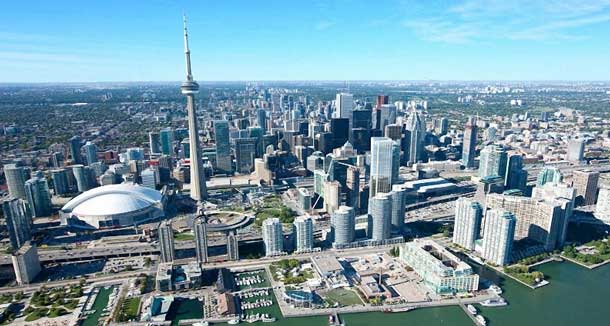 By Dr. Sherry Cooper
By Dr. Sherry Cooper
TORONTO – BUSINESS – Premier Kathleen Wynne surprised the market this morning by announcing sweeping measures aimed at cooling the red-hot housing market a full week before Ontario Budget Day. The sixteen-measure package is largely intended to do three things: Cool demand; boost supply; and limit the increases in rents.
No one doubts that something needed to be done to dampen speculative fervour and increase the supply of both rental properties and non-rental housing in the GTA and surrounding areas. While home prices have been rising in the GTA for more than a decade, the price gains hit an inflection point 2016 with hyperbolic price gains, exaggerated well beyond reasonable levels took hold, spiraling to a sellers’ strike, rampant speculation and frenzied demand.
In most of the region, the inventory-to-sales ratio fell to less than one-month’s supply as speculators compete with first-time and other buyers, driving prices to the stratosphere. Potential sellers held back, expecting prices to continue to rise at a 30% annual rate. Many of these potential sellers feared they wouldn’t find a suitable place to live as speculators increasingly are willing to buy properties with negative carry as capitalization rates fell, expecting to make a fast buck in a year or two. This has been compounded by non-resident foreign purchases, much of which could well lie vacant, further reducing supply and often damaging existing neighborhoods. Moreover, the market is further inflated by nefarious activities on the part of unethical market participant–activities that include “paper flipping”, rigged bidding, double-dealing and falsified income and asset statements–not to mention reselling properties pre-construction, which is technically legal but sometimes reportedly involves kick-backs to developers.
Clearly, this frenzy is unsustainable and something needed to be done to avert a crash landing–a result that is in no one’s interest as it would dramatically slow economic activity and job growth in the province and beyond. The question is: Will the Ontario Fair Housing Plan-–comprised of 16 initiatives–-generate a soft landing and do the job of balancing housing and rental supply and demand.
Risks and Uncertainties
The most troubling measure is the expansion of rent controls to all rental properties built after 1991–condo or purpose built. While it is good for existing tenants, the potential unintended consequences are concerning. Rent controls diminish the supply of rental stock and have adverse implications for existing home markets as investors (and speculators) dump their properties in response to heightened uncertainty and already compressed capitalization rates. This is especially negative for the condo market as investors have often provided the seed money for new developments. Toronto suffers from a dearth of purpose-built rental properties owing to the rent controls introduced many years ago. There has been a burgeoning rise in the development of such properties over the past year or so, but expanded rent controls might cause many lenders, investors and developers to reassess their plans.
Setting the rent-control cap at the rate of consumer inflation to a maximum of 2.5% while occupied by the same tenant would in no way provide a sufficient reward to offset the risk and capital necessary to build new supply. Any developer and investor would find the risk-reward trade-off insufficient. The cost of maintaining rental property is far greater than the 2% rate of inflation as utility costs, maintenance fees and property taxes have gone up by multiples of that rate, which is roughly equivalent to the return of risk-free government bonds.
Boost Rental Supply
The measures introduced to increase rental housing supply are welcome, but limited. Rebating a portion of development charges, lowering new property taxes on purpose-built rentals, unlocking available provincial land and streamlining the approval process will help to offset some of the negative effects of rent control, but they will no way offset them fully.
Already about 70% of Canadian households own their own home, which is probably close to long-run peak levels. Younger people and incoming residents are likely to need rental housing just as builders will need to set rents at sufficiently high levels to mitigate the effect of rent control on longer-term returns on investment, making housing less affordable for the very people the measures are intended to help. But, again, it is applauded by current tenants, particularly those living in relatively new housing.
Cooling Demand
The measures intended to cool demand by dampening speculation and discouraging vacant housing are welcome. The 15% non-resident speculation tax (NRST) in the Greater Golden Horseshoe levied on non-citizen, non-permanent residents and foreign corporations (with some exclusions) makes sense, but we have inadequate data to judge the magnitude of its effect. If Vancouver’s experience is any guide, the NRST should reduce home price inflation by some measure.
A tax on vacant housing and land will likely increase the rental supply as most of these properties are owned by non-resident foreigners.
The prevention of paper flipping or reselling properties pre-construction is welcome.
Biggest Uncertainty: In my view, the biggest quandry is the impact of this sweeping package on market psychology as it ripples through the economy. The speculators will be the first to run for the hills, reducing demand and increasing supply–which, of course, is the intended consequence. But taking that a step further, boomers who have been holding off listing their homes will call their realtors to do so promptly if they perceive markets are softening, further increasing supply. And buyers could prudently suspend their home search, at least for a while, in the hopes that prices will fall, further diminishing demand. The real question then becomes, will there be a soft- or a hard-landing. Stay tuned, we will be watching these developments very closely.
Dr. Sherry Cooper is the Chief Economist at Dominion Lending Centres.







